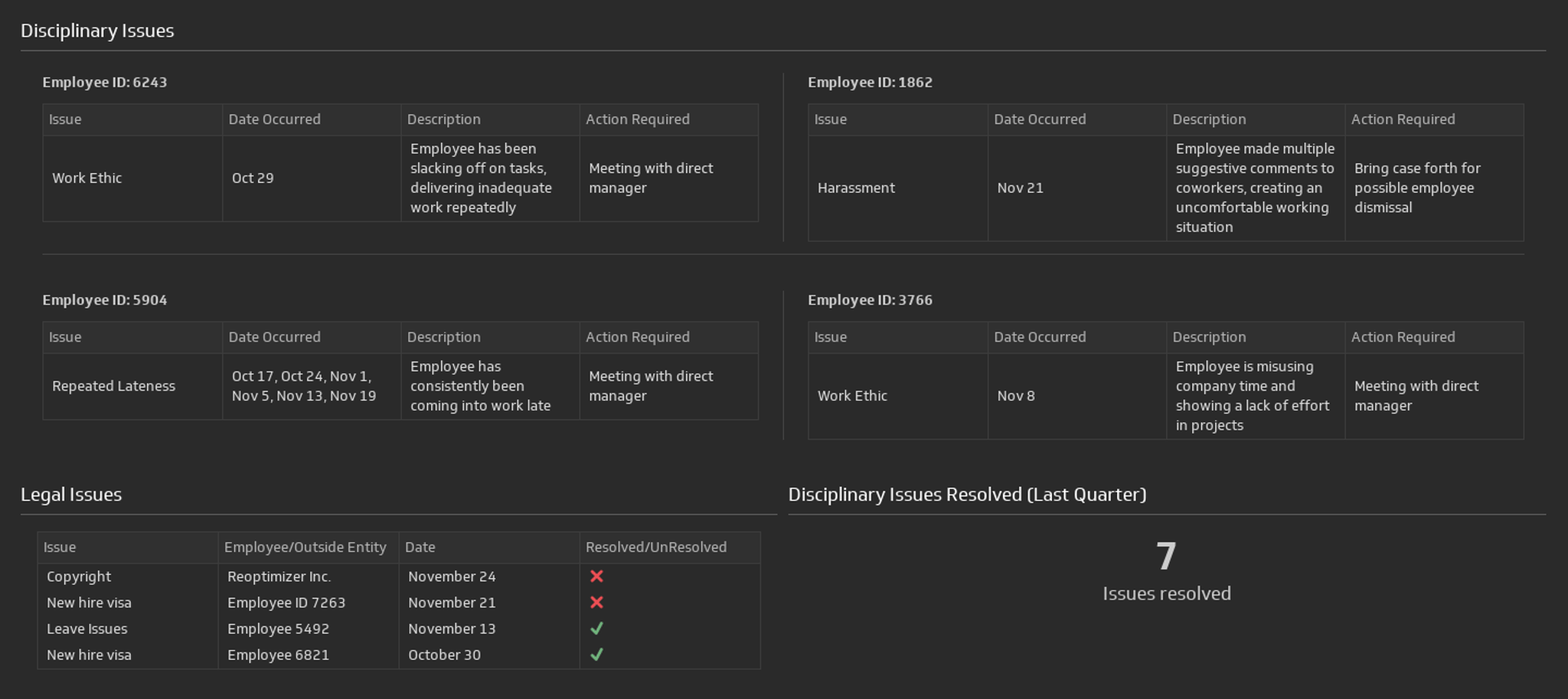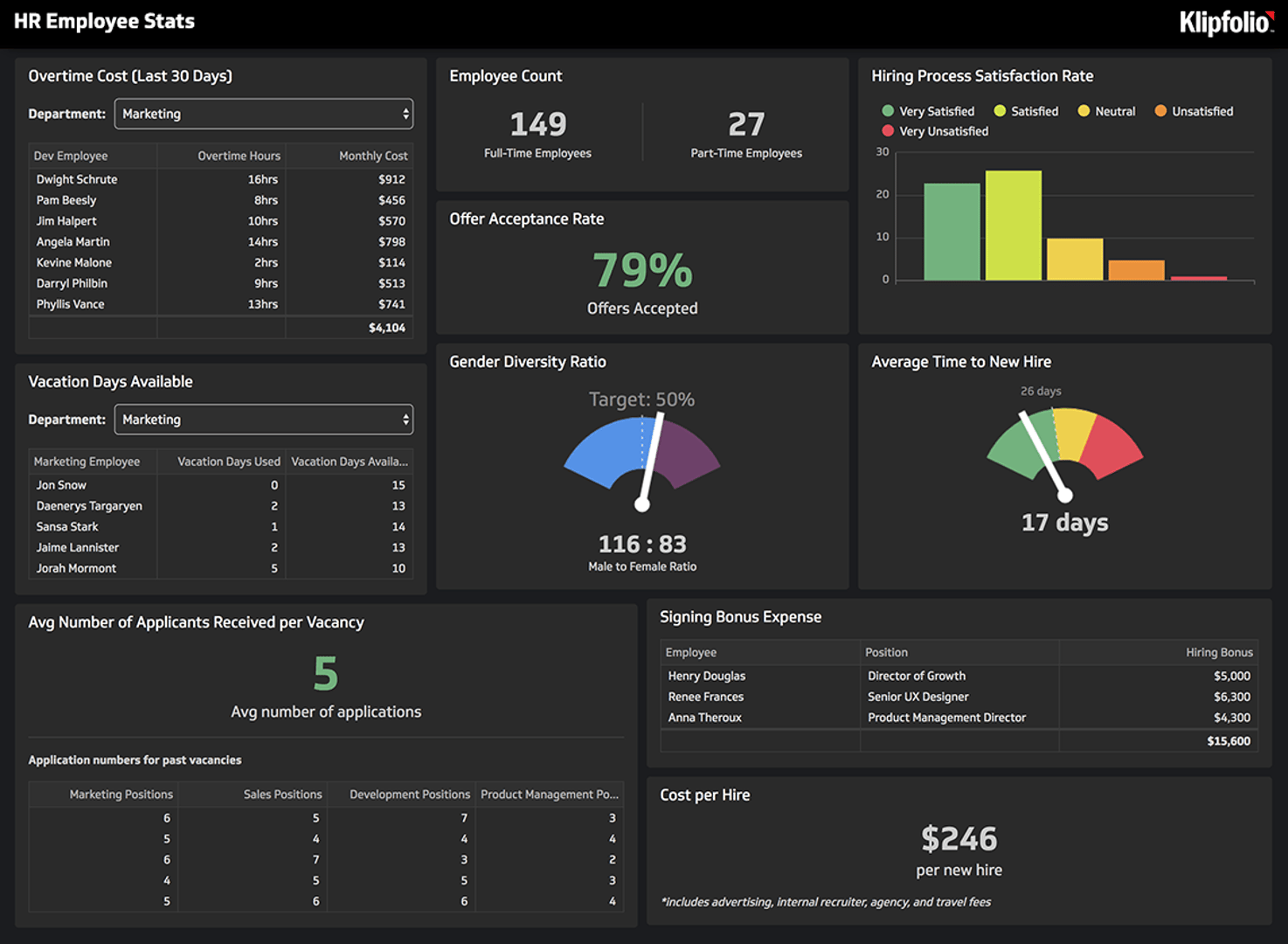What you should measure in employee performance reviews

Published 2023-09-27
Summary - To understand how well employees do their jobs, you need to measure performance. Learn about 5 methods to measure employee performance.
If you want to know how well your employees do their jobs, you need to measure their performance.
Reviewing employee activities will provide you with a wealth of information. It will enable you to recognize good work and spot the improvement areas.
Many managers find themselves stuck, not knowing what to measure for performance reviews. Often rendering the evaluations useless.
To improve your business profit margins, you must assess, measure, and enhance productivity.

Learn the value of each employee by accurately measuring their performance levels.
Ways to Measure Employee Performance Reviews
There are several methods you can use to measure performance data.
Yet, when we envision measuring something, it is typically a numbers-only game. Like with recipes, construction, or even when determining height restrictions.
We use numbers as our process to define the outcome of individual circumstances.
But when it comes to evaluating the actions of people, it calls for the usage of different kinds of methods.
When measuring human performance, use a combination of hard numbers and intuitive insights.
Below are some of the ways you can assess employee performance.
5 Methods to Measure Employee Performance

1. Visual Rating Scales
A typical visual or graphic scale uses consecutive numbers like 1 to 5, or 1 to 10, to rate employee performance.
The rating scale is a method often used to measure behavioral elements, including:
- Understands Job Tasks
- Participates in Decision-Making
- Takes Constructive Criticism Well
- Works Well with Other Team Members
You can also find out if an employee is under-performing using the scale. Again, you can rate them from 1 to 5 or 1 to 10, whichever you prefer, but remain consistent.
- Never Arrives at Work on Time
- Frequently Absent
- Rarely Participates
- Presents Little to No Effort When Working on Tasks
- Disruptive to the Team
It is easy to see how soft, intuitive insights are needed to rate these behaviors, good or bad. Understanding only the number-scale is not enough.
When jobs change, or some duties are no longer required, you can adapt the scale to your business needs.
2. 360-Degree Feedback
This appropriately named system uses the feedback of others. This includes the opinions and assessments of an employee’s performance.
The feedback can come from:
- Co-Workers
- Other Managers
- Supervisors
- People Who Directly Work with the Employee
As you listen and examine the input from each source, you can notate any positive or negative trends.
You can also recognize any areas that may need more reviews, improvements, and support.
3. Self-Evaluation
Involve the employee in his or her evaluation. Ask them to assess their performance. This method can be beneficial in having them assume responsibility for their actions.
Some employees tend to be more critical of their performance than their managers.
Use a form that asks multiple-choice questions. You can choose one that requires essay-type answers instead or a combination of the two.
Compare your employee performance review to the employee self-evaluation. It helps find similarities and discrepancies. It is also a great way to gain a deeper understanding of each employee.
Self-evaluation can generate unlikely conversations. Talks that can be beneficial to both employee and company development.
4. Management By Objectives (MBO)
The MBO method is also known as “management by results." It is the process of employees and managers forming objectives to evaluate together.
They determine individual goals and learn how they align with those of the company. The employee and manager will also discuss how to measure and check performance.
MBO gives employees a clear understanding of job expectations and aspirations.
Allowing them to become a part of the evaluation process.
This inclusion may foster better communication and increase their motivation at work.
5. Checklists
Using a simple “yes or no” list, you can identify the employees who lack in certain areas.
It will also help you uncover those that need extra training to become more efficient.
Once you get to know the different ways to measure employee performance, you can move on to the next step.
You must learn about the common causes that affect employee performance levels.

Common Causes Affecting Your Employee Performance Levels
Job satisfaction is the main reason employees perform well in their jobs. But the feeling of work fulfillment is often the result of a combination of many elements.
There are specific things to look at when reviewing an employee’s job performance. This is not only about employee behavior. It must also include the various ways your company may contribute to how well they function.
Performance Reviews: Evaluate Employee Behavior and Company Contributions
How well an employee performs depends on their behavior level and how your company affects their actions.
Measure your employee levels in the following areas:
1. Level of Execution
There is always a way to prioritize tasks. Employees need to deliver on commitments, be creative, and execute their duties until they are done. People who love what they do tend to perform well.
2. Level of Workload
If employees are deprived of sleep due to being overworked, you will soon see a drop in performance levels. Companies should promote health and an adequate amount of rest so employees come to work happy and highly productive.
3. Level of Creativity
Creativity is one of the most essential aspects in evaluating employee performance. Creative employees typically ask questions to find solutions. They think outside the box and are innovative.
When conducting your evaluations, track the number of incidents your employee expresses creativity.
Check to see if it boosts performance without causing any distractions. If you see an increase, you can identify and reward high performers in a meaningful way.
4. Level of Accuracy
To deliver quality work, employees must produce a high level of accuracy. If mistakes are made that cause a slowdown in production, your company loses money.
Employees who continuously make errors may need extra training sessions or support. Performance evaluations can help you identify issues to create solutions.
5. Level of Communication
Employees with a high level of communication often perform well at their jobs. They will ask questions when they do not understand or are confused by a work task.
This is an essential trait for employees to have. The lack of communication is a massive problem.
Each can cause delays or have employees incorrectly performing tasks.

Wrap Up
Employee performance reviews are crucial to every business that wants to grow. And what business doesn’t.
Yet, the way a worker performs at their job is a direct reflection of how well the company operates.
This is why you need to consider if your business contributes to the way an employee performs.
Could there be something in the workplace or at their station that they lack? And if they had it, would their job performance improve?
As a manager, you must choose a performance review method that is best for your business. You need to measure employee behavior levels and recognize how much of a role your company plays in the outcome of those reviews.
Author bio:
Matt Shealy is the President of ChamberofCommerce.com. Chamber specializes in helping small businesses grow heir business on the web while facilitating the connectivity between local businesses and more than 7,000 Chambers of Commerce worldwide. Matt contributes to a number of business publications across the web such as Business.com and SAP.com.
Related Articles

Klipfolio Partner How-To #1: Duplicating dashboards across client accounts
By Stef Reid — November 27th, 2025
Klipfolio Partner How-To #2: Company Properties can simplify client set-up
By Stef Reid — November 26th, 2025
Top 10 Marketing Dashboard Ideas for Tech Companies


